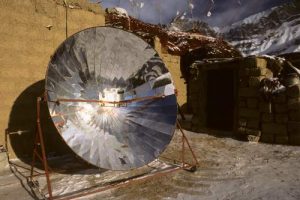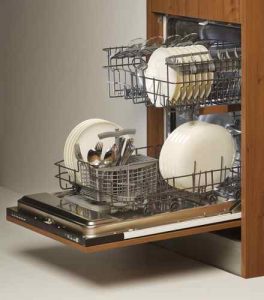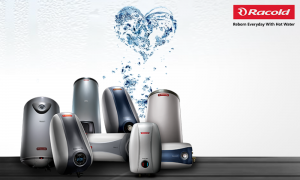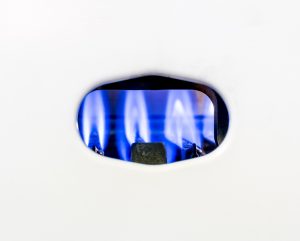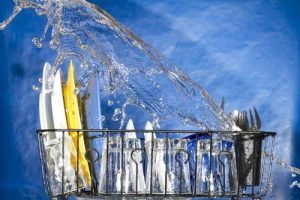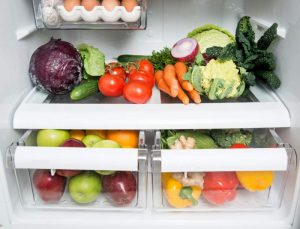Cooktop Comparison: Gas, Electric and Induction
Recently while interacting with a Bijli Bachao reader, we came across a question: which cooktop should I buy Gas or Induction? And this made us realize: Hey! We didn’t think about it! Cooking typically is a small component of the whole energy requirement in a house (especially in most middle and upper class urban homes), which some people typically ignore. Although rising LPG/PNG costs does cause a furore but rarely do we compare it with other form of energy: electricity. But with increasing popularity of Induction cook-top one has to really compare how different types of cook-top stack up against each other. Truly speaking, we did not find glaring benefit of one over other, so we just present facts in this article.
Types of cooktops available in market
There are 3 types of cook-tops available in market: Gas, Electric and Induction. This is how they are different:
- Gas: This type of cooktop has a burner on top and uses gas (LPG or PNG) to burn a flame that is used to cook food.
- Electric: This type of cook-top has a coil that heats up due to resistance when current passes through it. As its name, it uses electricity to generate heat and cook food.
- Induction: Although this type of cook-top uses electricity but it uses magnetic property of steel to directly heat the cooking vessel. Unlike other cooking methods it does not use flames or red-hot element to cook. Thus it is considered more energy efficient. Also it only heats the vessel in contact thus reduces possibility of injury.
Efficiencies of various cooktops
US Department of energy did some boiling water tests to come up with efficiency of various cook-tops (Source: US DOE) and below was the results of the same:
|
Gas |
Electric |
Induction |
|
|
Efficiency |
40% |
74% |
84% |
The efficiency mentioned above is based on the heat transferred to the pan kept on top of it. Please note that the efficiency also depends on the size of pan used compared to the size of flame/heating surface. The numbers above are based on ideal setup.
Comparing costs of sources
Looking at the numbers above one cannot decide which is better economically as one has to also factor in the costs of various sources. So we decided to compare apples to apples. There are 3 types of sources that we commonly get: LPG Cylinders, Piped Natural Gas and Electricity. Now how do these 3 compare:
Let’s take an example that we want to boil 10 ltrs of water (at 25 degrees). So the energy required for the same is:
10000 x 4.2 x 75 = 3150000 Joules.
Now this is how various sources compare:
|
LPG Stove |
PNG Stove |
Induction Cooktop |
Electric Coil Cooktop |
|
|
Unit Definition |
1 Cylinder (14.2 kgs LPG) |
1 SCM |
1 kWH |
1 kWH |
|
Energy (in Joules) per unit |
654620000 |
41868000 |
3600000 |
3600000 |
|
Energy (in Joules) per unit factoring efficiency |
261848000 |
16747200 |
3024000 |
2664000 |
|
Units Required to heat 10 lts of water. |
0.012 |
0.188 |
1.042 |
1.182 |
|
Cost per Unit (in Rs) |
Rs 423 (Subsidized), Rs 900 (Un-Subsidized) |
Rs 23 |
Rs 5 |
Rs 5 |
|
Cost of heating 10 lts water (in Rs) |
Rs 5.09 (Subsidized), Rs 10.8 (Un-Subsidized) |
Rs 4.33 |
Rs 5.21 |
Rs 5.91 |
The above table shows that though efficiency of an induction cook-top is double than that of a gas cook stove, the cost of using it may not be proportional. The final values may vary based on the cost of various sources available to you as price of LPG, PNG or electricity may differ.
Assumptions and Inputs for the data above:
- Joules per unit of LPG is taken from Wikipedia source: link.
- Joules per unit of PNG is taken from Wikipedia source: link.
- Joules per unit of electricity is taken from Wikipedia source: link.
- Rate of LPG cylinder is assumed to be the rate of a subsidized LPG cylinder available in Mumbai. It can vary for different cities.
- Rate of PNG per unit is taken at average rate of PNG unit in Mumbai. Please note PNG tariffs are slab based. If your consumption is more, rate will be higher.
- Electricity rate per unit is approximate average last slab rate across the country. You can check your average rate per unit using our calculator: Online Electricity Bill Calculator – For all states in India.
- The efficiencies may vary a little based on the usage.
Pros and Cons of various cook-tops
For Gas Stoves:
- Pros:
- Gas stoves provide better cooking control. One does not have to worry too much about position and size of the utensil kept on it. Though it can impact efficiency.
- One does not have to depend on power cuts for cooking.
- Good for cooking most Indian food like chapatti, etc.
- No specific requirement for utensil type.
- Cons:
- Inflammable and thus dangerous. Can cause burns.
- Heats up the surroundings as well. Can increase the cooling bills if the environment is air conditioned.
- Ceiling Fans cannot be used along with it.
- Flames do produce CO2.
For Electric Coil Cook-tops:
- Pros:
- Not inflammable thus creates a little safer environment.
- More energy efficient than gas stoves and can be economical than gas stoves if gas is not available at subsidized rates.
- Not as good as a gas stove for cooking food like chapatti but still can be used.
- Releases less heat to the surrounding and ceiling fans can be used along with it.
- Cons:
- Can cause burns when touched.
- Takes time to heat up.
- Can only be used with flat surface utensils.
- Inadequate power supply can stop cooking.
For Induction Cook-tops:
- Pros:
- Induction cook-tops heat faster and distribute heat more evenly.
- They are completely safe as they heat only when a steel or iron element comes in contact.
- They are easier to clean.
- Efficient in terms of energy use.
- Come with programmable temperature controls.
- No heat wasted as it cools quickly as one shuts it down.
- Cons:
- Can only be used with steel or iron utensils. Thus the kitchen has to be adjusted accordingly.
- They are generally expensive than regular cook-tops.
- Can be used only with flat surface utensils.
- Inadequate power supply can stop cooking.
- Will not work at all for some Indian food like chapatti.
- Some people observe that the heating is localized and mostly happens at the center of the utensil. This makes it important to put the right sized utensil on a induction cook-top and over sized ones should not be used.
Primary and Secondary Sources of Energy
On a side note we would also like to add that Gas is a primary source of energy i.e. it is directly used in the form it is available from environment. Whereas Electricity is a secondary source of energy i.e. either coal or gas is used to generate electricity. There are transmission losses and generation losses of energy with electricity. So by the time electricity reaches your home, a lot of energy is already lost. So if we factor these losses along with efficiency, both sources work out the same and it is a personal preference or economic value that should drive the decision.
References
http://www.aceee.org/consumer/cooking
http://www.nytimes.com/2008/01/02/dining/02curi.html?_r=0
http://www1.eere.energy.gov/buildings/appliance_standards/residential/pdfs/cookgtsd.pdf
About the Author:
Abhishek Jain is an Alumnus of IIT Bombay with almost 10 years of experience in corporate before starting Bijli Bachao in 2012. His passion for solving problems moved him towards Energy Sector and he is keen to learn about customer behavior towards Energy and find ways to influence the same towards Sustainability. More from this author.

